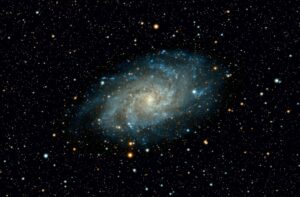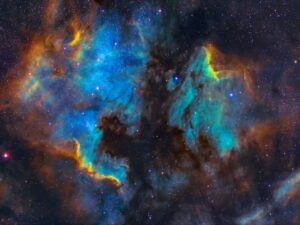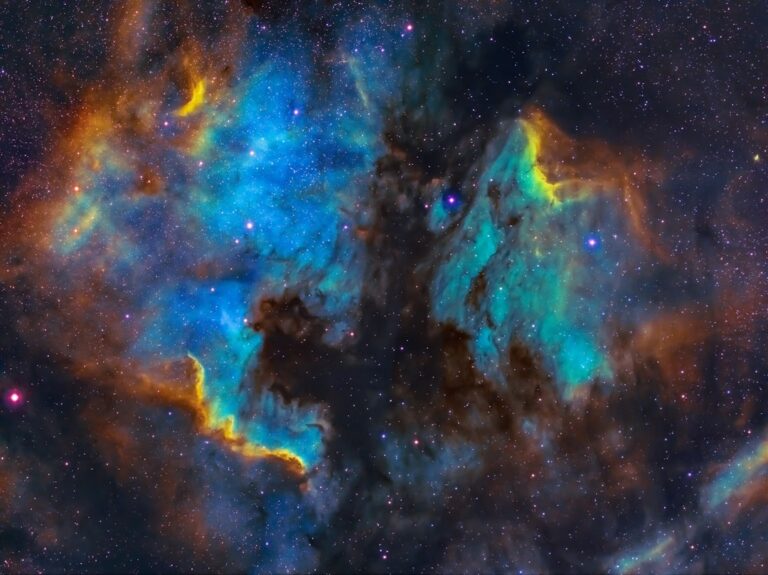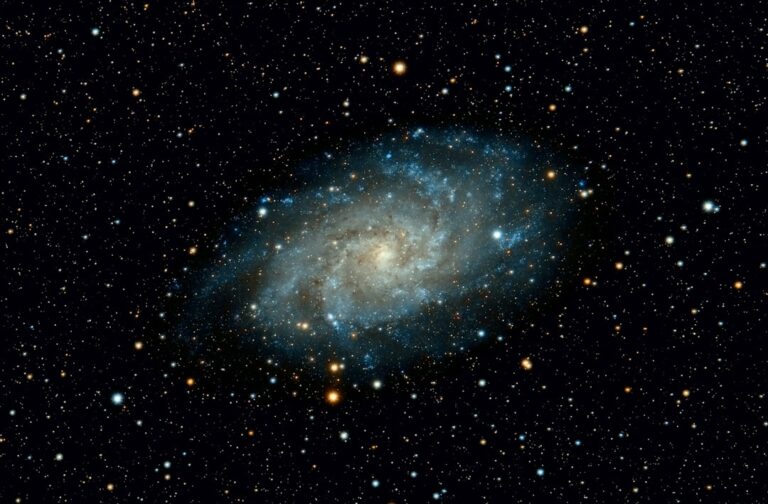Starburst galaxies represent one of the most dynamic and fascinating phenomena in the universe, characterized by an exceptionally high rate of star formation. Unlike typical galaxies, where star formation occurs at a relatively steady pace, starburst galaxies experience intense bursts of activity, leading to the rapid creation of new stars. This phenomenon can be triggered by various factors, including gravitational interactions with neighboring galaxies, mergers, or the influence of dark matter.
The study of these galaxies not only enhances our understanding of stellar evolution but also provides insights into the conditions that lead to the formation of galaxies themselves. The term “starburst” was first coined in the 1970s to describe galaxies exhibiting these extraordinary rates of star formation, often several times greater than that of the Milky Way. These galaxies are typically rich in gas and dust, which serve as the raw materials for star creation.
The intense activity within starburst galaxies can lead to the formation of massive stars, which in turn can produce supernovae and contribute to the chemical enrichment of the interstellar medium. As such, starburst galaxies are not merely interesting objects of study; they play a crucial role in the broader context of cosmic evolution.
Key Takeaways
- Starburst galaxies are characterized by intense star formation activity, resulting in a burst of new stars being formed at a rapid rate.
- The spectacular starburst galaxy is known for its high luminosity, strong emission lines, and intense infrared radiation.
- The formation and evolution of starburst galaxies are influenced by interactions with other galaxies, gas accretion, and the presence of a supermassive black hole at the center.
- Observing and studying the spectacular starburst galaxy can provide valuable insights into the processes of star formation, galactic evolution, and the interplay between stars and interstellar medium.
- Starburst galaxies play a crucial role in the universe by enriching the interstellar medium with heavy elements, triggering further star formation, and potentially influencing the formation of planetary systems.
Characteristics of the Spectacular Starburst Galaxy
Spectacular starburst galaxies are distinguished by several key characteristics that set them apart from their more quiescent counterparts. One of the most notable features is their high surface brightness, which is a result of the concentrated regions of star formation. These areas are often marked by bright clusters of young, hot stars that emit significant amounts of ultraviolet light.
This luminosity can outshine entire galaxies, making starburst galaxies some of the brightest objects in the universe.
In many starburst galaxies, this gas is found in dense clouds that collapse under their own gravity to form new stars.
The rate of star formation can be so intense that it leads to the creation of massive stellar clusters, which can contain hundreds or even thousands of stars within a relatively small region. Additionally, these galaxies often exhibit strong emission lines in their spectra due to the ionization of gas by the intense radiation from newly formed stars. This emission can provide valuable information about the physical conditions within the galaxy and the processes driving its star formation.
Formation and Evolution of Starburst Galaxies

The formation and evolution of starburst galaxies are complex processes influenced by a variety of factors. One primary mechanism is gravitational interactions with other galaxies. When two or more galaxies collide or pass close to one another, their gravitational fields can distort each other’s structures, leading to increased gas density in certain regions.
This compression can trigger rapid star formation, resulting in a starburst event. Such interactions are common in galaxy clusters, where numerous galaxies are in close proximity. Mergers between galaxies are another significant driver of starbursts.
When two spiral galaxies merge, for instance, their gas and dust can become highly concentrated in the central regions, igniting a flurry of star formation activity. The merger process can also lead to the formation of supermassive black holes at the centers of these galaxies, further influencing their evolution. Over time, as these starburst events progress, they can significantly alter the structure and dynamics of the host galaxy, potentially transforming it into a different type altogether.
Observing and Studying the Spectacular Starburst Galaxy
| Metrics | Data |
|---|---|
| Galaxy Name | Starburst Galaxy |
| Distance from Earth | Approximately 11 million light-years |
| Star Formation Rate | 10 times higher than the Milky Way |
| Observation Method | Telescopes, including Hubble Space Telescope |
| Key Discoveries | High concentration of young, massive stars |
Observing starburst galaxies presents unique challenges and opportunities for astronomers. The intense brightness associated with these galaxies often requires specialized instruments to capture their details without being overwhelmed by their luminosity. Ground-based telescopes equipped with adaptive optics can help mitigate atmospheric distortions, allowing for clearer images.
However, many starburst galaxies are best studied using space-based observatories like the Hubble Space Telescope or the upcoming James Webb Space Telescope (JWST), which can observe in infrared wavelengths and penetrate dust clouds that obscure visible light. Spectroscopy plays a crucial role in studying these galaxies as well. By analyzing the light emitted from a starburst galaxy, astronomers can determine its composition, temperature, density, and motion.
This information is vital for understanding the physical processes occurring within these galaxies and how they evolve over time. For instance, emission lines from ionized gas can reveal the presence of specific elements and help identify regions where new stars are forming. Additionally, radio telescopes can detect molecular gas clouds, providing insights into the fuel available for future star formation.
The Role of Starburst Galaxies in the Universe
Starburst galaxies play a pivotal role in our understanding of cosmic evolution and galaxy formation. They serve as laboratories for studying stellar processes on a grand scale, offering insights into how stars form and evolve under extreme conditions. The rapid rate of star formation in these galaxies contributes significantly to the overall stellar population in the universe and influences the chemical enrichment of intergalactic space.
Moreover, starburst galaxies are often seen as precursors to larger galactic structures. As they evolve and exhaust their gas reserves through intense star formation and subsequent supernova explosions, they may transition into more stable forms such as elliptical galaxies. This transformation is crucial for understanding how different types of galaxies emerge over cosmic time.
Additionally, studying starburst galaxies helps astronomers refine models of galaxy evolution and provides context for observations made across different epochs in cosmic history.
Unique Features and Phenomena in the Spectacular Starburst Galaxy

Within spectacular starburst galaxies, unique features and phenomena often emerge due to their extreme environments. One such phenomenon is the presence of supernova remnants, which are remnants left behind after massive stars explode at the end of their life cycles. These remnants can create shock waves that compress surrounding gas and dust, potentially triggering further star formation in nearby regions.
The interplay between supernovae and star formation creates a dynamic feedback loop that shapes the evolution of these galaxies. Another intriguing aspect is the presence of outflows driven by stellar winds and supernova explosions. These outflows can expel gas from the galaxy into intergalactic space, enriching it with heavy elements produced during stellar nucleosynthesis.
This process not only affects the host galaxy but also contributes to the chemical evolution of surrounding regions. Observations have shown that some starburst galaxies exhibit powerful galactic winds that can carry material away at high velocities, influencing both their own evolution and that of neighboring galaxies.
Challenges and Future Discoveries in Exploring Starburst Galaxies
Despite significant advancements in observational technology and theoretical modeling, studying starburst galaxies remains fraught with challenges. One major hurdle is distinguishing between different types of star-forming activity within these galaxies. For instance, some regions may experience intense bursts due to mergers or interactions, while others may be undergoing more gradual star formation processes.
Disentangling these various mechanisms requires sophisticated modeling and multi-wavelength observations.
These instruments will enable astronomers to probe deeper into distant starburst galaxies and study their properties with unprecedented detail.
Additionally, ongoing surveys aimed at cataloging large samples of starburst galaxies will provide valuable statistical data that can enhance our understanding of their distribution and evolution across cosmic time.
The Importance of Understanding the Spectacular Starburst Galaxy
Understanding spectacular starburst galaxies is essential for unraveling many mysteries surrounding galaxy formation and evolution in our universe. Their unique characteristics and dynamic processes offer a glimpse into how stars form under extreme conditions and how these events shape galactic structures over time. As we continue to explore these fascinating objects through advanced observational techniques and theoretical models, we gain deeper insights into not only our own galaxy’s history but also the broader narrative of cosmic evolution.
The study of starburst galaxies also has implications for understanding dark matter’s role in galaxy formation and evolution. By examining how these galaxies interact with their environments and evolve over time, astronomers can refine models that incorporate dark matter’s influence on galactic dynamics. As we push forward into this new era of astronomical discovery, it becomes increasingly clear that comprehending spectacular starburst galaxies is not just an academic pursuit; it is a vital component in piecing together the grand tapestry of our universe’s history.
The Starburst Galaxy, known for its intense star formation activity, offers a fascinating glimpse into the processes that govern galaxy evolution. Understanding the dynamics of such galaxies can be enriched by exploring broader sociological perspectives, as discussed in the article on understanding sociological perspectives. This article delves into how different frameworks can shape our interpretation of complex phenomena, much like how various astronomical models help us comprehend the behavior of starburst galaxies.



















+ There are no comments
Add yours